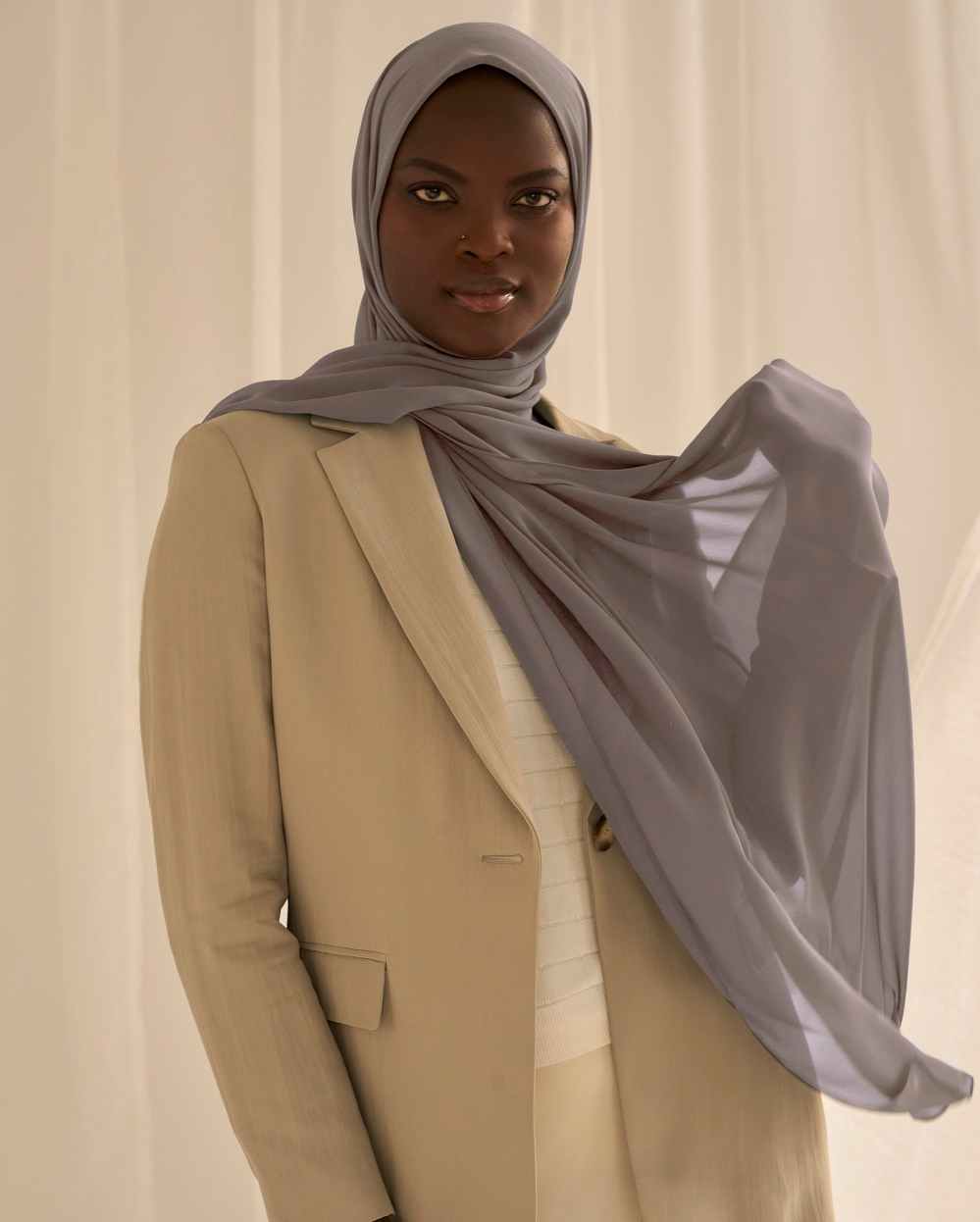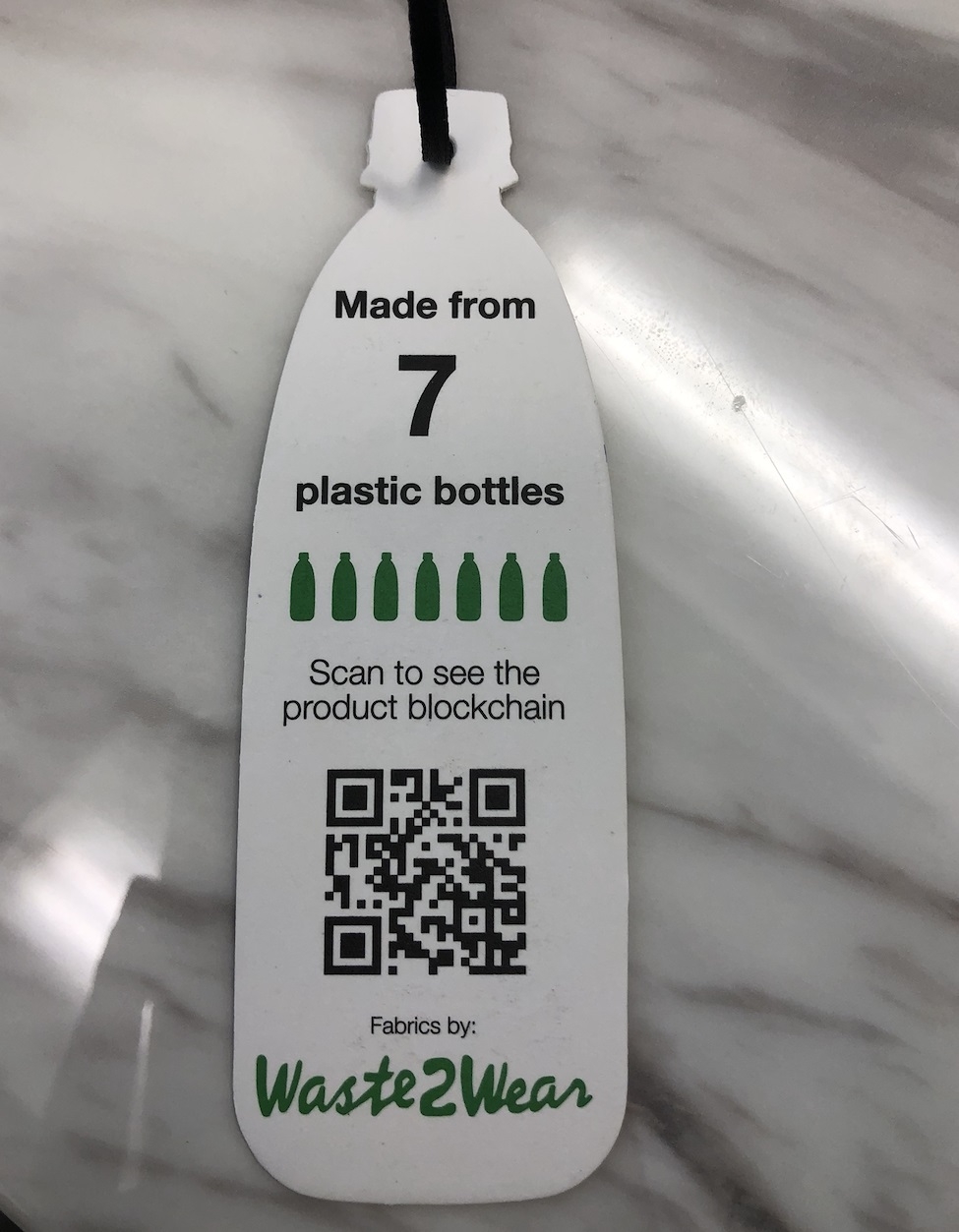Our New Recycled Chiffon Hijabs Marries Science, Tech, Sustainability and Our Faith
Fashion
|
Apr 20, 2021
|
5 MIN READ

Haute Hijab's Recycled Chiffon Hjjab in Blush
An astonishing eight million tons of plastic waste enters the oceans every year.
Just reflect on that for a moment. All the plastic bottles we use in our everyday lives, from drinking water to our shampoo bottles to any number of food bottles. Think about Ramadans past – praying tarawih at the masjid, the massive amounts of plastic disposable water bottles consumed at iftar and throughout prayer and then discarded in overflowing garbage bins at the end of the night.
The Quran tells us, “Eat and drink from the provision of Allah, and do not commit abuse on the earth, spreading corruption.” (2:60)
What if there was a way you could help reduce the amount of plastic bottles that eventually make their way into the ocean? What if you could affect waves of change and be a custodian of our earth, as our faith charges us to be, through the kind of hijab you wear? We were intrigued by this idea when we first started researching the concept of creating chiffon hijabs through recycled plastic bottles more than a year ago. And now, we’re proud to bring you our latest collection, Recycled Chiffon Hijabs, in partnership with Waste2Wear.

Recycled Chiffon Hijab in Silver Mauve
How are these hijabs made? How many bottles does each hijab save from reaching the ocean? Are these chiffon hijabs up to the high standards of our Haute hijabs, and do they feel good against your skin? Let’s explore the science and sustainability technology behind this beautiful collection.
What makes these hijabs eco-friendly?
They’re called Recycled Chiffon Hijabs for a reason. HH collaborated with Waste2Wear, a company that uses blockchain technology to create products out of recycled plastics, to develop Recycled Chiffon Hijabs. This partnership allows our customer to get her favorite go-to chiffon hijab while helping to reduce plastic waste.
For every 40” by 40” square Recycled Chiffon Hijab, eight plastic water bottles are used; seven per every 68” by 27” rectangle hijab (four inches shorter than our regular rectangle size as per customer requests). In addition to reducing plastic waste, the production of this hijab uses 70 percent less energy, produces 75 percent less CO2, and uses 86 percent less water than virgin polyester (which is what regular chiffon fabric is made of), according to the Waste2Wear website.
Each Recycled Chiffon Hijab comes with a unique tag with a QR code; scanning it will show you the origin of the plastic waste that made up YOUR hijab, the environmental report of production and how it is made.

An example of the Waste2Wear tag that will come with your Recycled Chiffon Hijab.
The process of turning plastic bottles into polyester chiffon material starts with harvesting plastic bottles before they hit landfills and oceans from restaurants, stores and manufacturing sites as well as culling them from the ocean up to 50m. From there, the bottles go through a series of processes to become fabric (watch this video to see how it’s done):
- At the recycling facility the conversion process of turning waste into wearable fabric begins.
- A flotation and separation process removes the caps and labels from the bottles, as they are made of plastics with different characteristics. Plastic bottles are then processed into flakes.
- After being washed the flakes are melted.
- Yarns are pulled from the melted polyester.
- The result is a clean, valuable, and recycled raw material perfect for the textile industry.
- The raw filament yarns are spun into yarn and ultimately woven into variety of different fabrics (source: Waste2Wear)
The material created through this process is a Recycled polyester called R-PET, which then becomes our Recycled Chiffon Hijabs. According to Waste2Wear:
- R-PET requires 86 percent less water than regular polyester.
- RPET consumes 70 percent less energy than regular polyester.
- The CO2 emissions of R-PET are 75 percent lower.
- 1 kg of RPET can keep 60 water bottles out of environment.
- Using RPET helps us to not only keep plastic out of the landfills and oceans, but also to save our natural resources (source: Waste2Wear).
The R-PET chiffon fabric created for our Recycled Chiffon Hijabs is is certified by sustainability industry leaders in quality testing, including Intertek (which engages in third party quality testing), OEKO-Tex® Standard 100, GRS (Global Recycled Standards) and BSCI (certifies social & ethical working conditions in Waste2Wear factories).
But what about the quality? These hijabs are good for the environment, but are they good for me?
Recycled Chiffon Hijab
Create waves of change by making an impact, one hijab at a time. Produced in partnership with Waste2Wear, our recycled chiffon hijabs are made from 7 - 8 recycled plastic bottles to help reduce our carbon footprint while giving you the same sleek, polished look that's as light, crisp, and easy to care for as our signature chiffons you know and love.
There is more than one way to do our part to save the Earth with many possible solutions and a multifaceted approach.
Of course reducing plastic is a wonderful way to help the environment, but what about the plastic that's already clogging our Earth, polluting our oceans, killing animals and destroying whole ecosystems? Recycling it to create long lasting useful products is yet another way to help reverse the damage that us humans have wreaked upon our planet. This earth is an amanah (trust) given to us by Allah (S), and we must do our part to protect it.
We spent months testing and retesting these hijabs against rigorous quality standards to make sure the feel, durability and color were up to our high HH standards. Our Recycled Chiffon Hijabs come in four NEW colors – Silver Mauve, Ballet Slipper, Adobe Rose and Sage – and three existing colors (also available in our non-recycled Chiffons) – Pearl, Rosewood and Blush. You'll find them on our Chiffon collection page with a green leaf icon identifying them. The recycled chiffon material of these hijabs has slightly more texture than our traditional chiffon, which may not be obvious to you, but it may help reduce slippage issues.
We’ve been working for several years now in our journey to become more and more sustainable and eco-friendly, beginning with sourcing deadstock fabric for our chiffon prints, bringing you our Bamboo Wovens, Ultimate Underscarves and our HH Sport hijabs made from innovative, more sustainably produced fabrics. But there is always more to do. Our earth is drowning in plastic, and we want to give it a new purpose. Each small step is a step in the right direction that is incumbent upon us to embrace as Muslims.
The Prophet Muhammad (saw) told his followers they would be rewarded by God for taking care of the Earth. He said: “If any Muslim plants any plant and a human being or an animal eats of it, he will be rewarded as if he had given that much in charity.” (Sahih Al-Bukhari, 8:41). This is the month to step up our game as Muslims, and we pray this new hijab is but one small way to honor our earth.
Subscribe to be the first to know about new product releases, styling ideas and more.
What products are you interested in?

